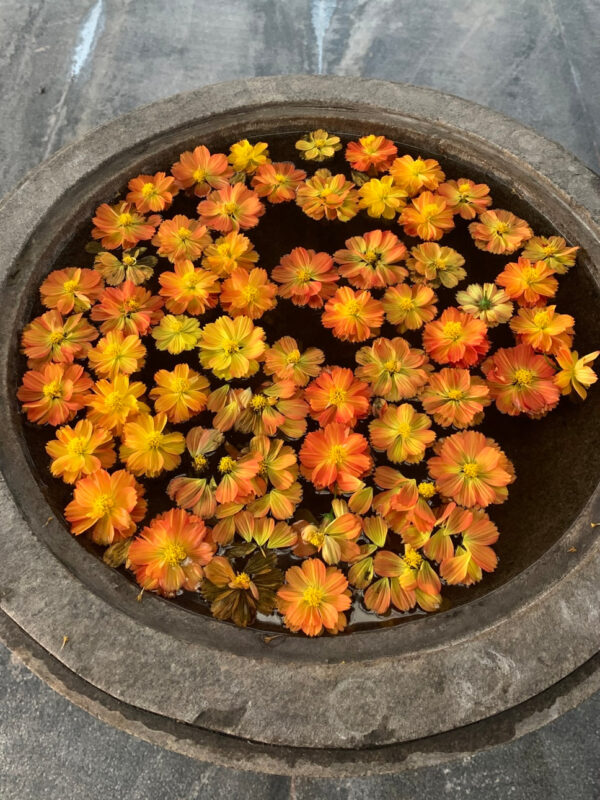Information



Full moons are a time of reflection, silent contemplation and rest. The tension created by the sun and the moon opposing one another can also signify the internal conflicts we may experience between the masculine & feminine energies within us all. When there is an imbalance between the two, we can experience frustration, irritability, mood swings, confusion, nervousness, all which also affect our physical body. During full moons, Kapha is also increased which can give the feeling of heaviness, feeling stuck and slow. This applies to both the body and the mind. Full moons are also a great time to sit with ourselves and reflect on these aspects, on our feelings and current state. It is not an ideal time for action or start something new. Instead, it is a time to be passive, calm and steady which are some of the qualities of the moon. Without these shadow moments in each monthly cycle, we cannot fully embrace and create more light in our life. Full moons usually illuminate some aspects which maybe we keep hidden in the back of our mind, or feelings we hold on to. Shedding the light on these can be a challenging process, but also highly beneficial once accepted and released.
Some practices to consider during full moon time:
Full moons can feel quite heavy and draining. Doing a digestive system cleanse can help to release any built up of toxins in the body & mind. Take in consideration your dosha so that you approach your body’s needs. However some foods can apply for all three.
A staple in Ayurvedic cuisine, kitchari is a tridoshic meal that is suitable for all 3 doshas. The use of the spices cumin, ginger and turmeric, which are generally used balance Vata, Pitta and Kapha by helping digestion and cleansing toxins. Kitchari is considered easier to digest as mung beans are used in combination with the three spices. Other spices such as curry powder can also be used although sometimes this can aggravate Pita due to the heat qualities. Kitchari can be enjoyed with a side of basmati rice or quinoa, but also on its own as it is a filling and nutritious meal.
Drinking tea can also help to purify the digestive system and clean the mind. There are many different teas you can choose, again depending on your dosha. A popular one often used is tea made from cumin, coriander and fennel seeds. These again pacify all 3 doshas.
Fresh fruits and vegetables can also be taken although if you have Vata or Kapha predominant dosha, raw food can sometimes be difficult to digest. So you can either stew some of the fruits where it applies or take them in the form of freshly made juice, which is easier to digest. Adding herbs such as cardamon and cinnamon can also help.
The practice of dharana (meditation) can be difficult because our mind is constantly on. Thoughts come in and out and sometimes (most of the times) with no particular use. A clear mind requires practice which is what yoga helps us with, however journaling is a wonderful way to express your thoughts without needing to explain them or to make sense of them. Randomly writing all your thoughts down that come to your mind in the morning is a great way to release them from your unconscious mind. Even if they don’t make sense, just dump all the thoughts on the paper with no specific meaning. With time, the mind becomes more free.
During full moons, it is not advised to do much asana practice, certainly not a dynamic and intense one. This is because of the heaviness qualities of the moon and the increased water element. But some light/restorative asanas can be done mainly for purification of the intestines & the mind. Therefore a yin or restorative practice can be done. Some asanas to consider:
Ardha Matsyendrasana or any spinal twist

Spinal twists can help to cleanse the digestive organs and flush away toxins. Some other benefits include opening the shoulders & chest and develop flexibility of the spine which also gives us fluidity in the mind to adapt with the rhythm of life.
Dangling or gentle standing forward fold

Standing forward folds stretch the hamstrings and glutes, allowing for any tension in these areas to be released. They also stretch the back muscles, stimulate digestion and boost blood and prana circulation to the brain.
Anjaneyasana

Low lunge focused on opening the hips and chest area. These are both areas of Swadisthana and Anahata, the sacral and heart chakras. Releasing tension from these areas gives us the space to let go of any stagnant emotions and open our heart to life with acceptance and compassion.
Supported Viparita Karani

Viparita Karani is an variation of Sarvangasana, shoulder stand which embodies the lunar energy. It is cooling and calming and boosts blood circulation and prana flow in the legs and hips.
Gentle Paschimottanasana

Seated forward folds give us time for introspection, reflection and connecting within. They stimulate and release tension from the back of the legs and the spine and create balance in Muladhara, the root chakra, the energy channel or grounding and balance in life.
